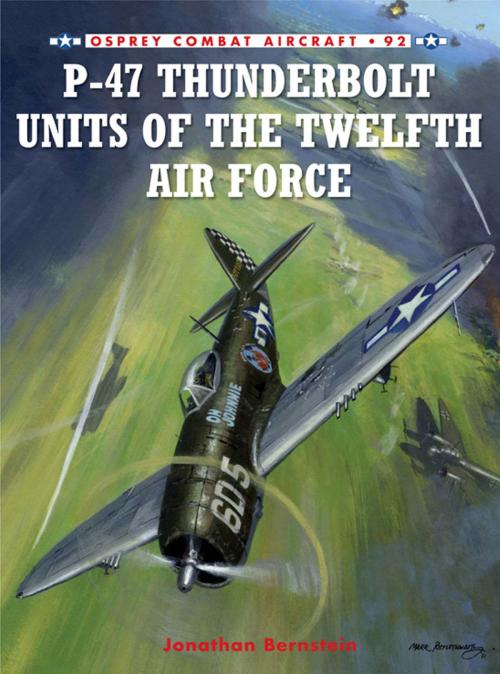P-47 Thunderbolt Units of the Twelfth Air Force
Nonfiction, History, Military, Aviation, Modern, 20th Century, World War II| Author: | Jonathan Bernstein | ISBN: | 9781780960371 |
| Publisher: | Bloomsbury Publishing | Publication: | August 20, 2012 |
| Imprint: | Osprey Publishing | Language: | English |
| Author: | Jonathan Bernstein |
| ISBN: | 9781780960371 |
| Publisher: | Bloomsbury Publishing |
| Publication: | August 20, 2012 |
| Imprint: | Osprey Publishing |
| Language: | English |
The P-47 Thunderbolt, originally designed as a high-altitude interceptor, became the principal US fighter–bomber of World War II. First adapted to the ground attack role by units of the Twelfth Air Force in early 1944, the strength and durability of the P-47 airframe, along with its massive size, earned it the nickname 'Juggernaut', which was quickly shortened to 'Jug' throughout the MTO and ETO. By October 1943, with the creation of the Fifteenth Air Force, nearly half of the Twelfth's fighter groups would be retasked with strategic escort missions, leaving six groups to perform close air support and interdiction missions throughout the entire Mediterranean theatre. The groups inflicted incredible damage on the enemy's transport routes in particular, using rockets, bombs, napalm and machine-gun rounds to down bridges, blow up tunnels and strafe trains. Myriad first-hand accounts and period photography reveal the spectacular success enjoyed by the Thunderbolt in the MTO in the final year of the war.
The P-47 Thunderbolt, originally designed as a high-altitude interceptor, became the principal US fighter–bomber of World War II. First adapted to the ground attack role by units of the Twelfth Air Force in early 1944, the strength and durability of the P-47 airframe, along with its massive size, earned it the nickname 'Juggernaut', which was quickly shortened to 'Jug' throughout the MTO and ETO. By October 1943, with the creation of the Fifteenth Air Force, nearly half of the Twelfth's fighter groups would be retasked with strategic escort missions, leaving six groups to perform close air support and interdiction missions throughout the entire Mediterranean theatre. The groups inflicted incredible damage on the enemy's transport routes in particular, using rockets, bombs, napalm and machine-gun rounds to down bridges, blow up tunnels and strafe trains. Myriad first-hand accounts and period photography reveal the spectacular success enjoyed by the Thunderbolt in the MTO in the final year of the war.















